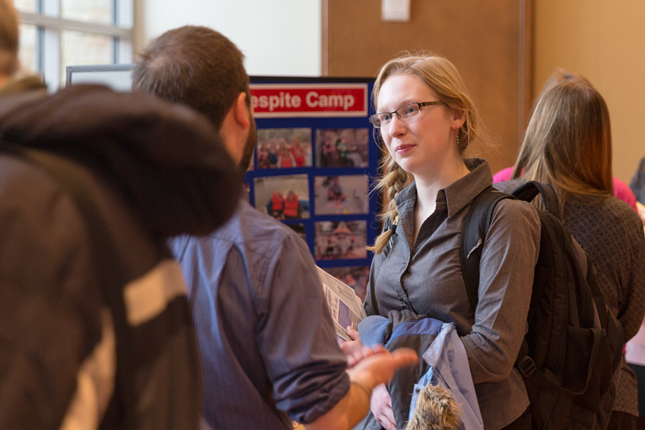
Students in the University of Wisconsin-Madison College of Letters & Science range from super-analytical Mathematics majors to ultra-inquisitive minds studying Philosophy — and everything in between.
Thanks to the efforts of one faculty member, the College now offers a course suited to any and all of those students as they prepare for professional careers. The online course, Inter LS 260, offers internship credit to any L&S student, regardless of major, who lands a professional placement somewhere, be it on an organic farm in rural Michigan or at the White House.
The course, designed by Professor Greg Downey, frees students to find their own, richly rewarding internships beyond campus. It requires them to keep weekly diaries of their work experiences and share them via a wiki, a collaborative website that can be easily edited. Throughout the week, course participants (writing in from various far-flung places) comment on each other’s notes. Overall, the goals are for students to contemplate how their internship experiences influence their career plans and to consider how their academic studies inform real-world situations.
“Students do not always see that everything we do — whether it is a class in poetry or medieval nation-states or contemporary politics or animal biology — is all going to offer great skills and experiences,” says Downey, a professor in the School of Journalism and Mass Communication and the School of Library and Information Studies. “The course forces them to think: How have your educational experiences prepared you for this crazy work situation that you’ve just been thrown into?”
Students are also tasked with completing weekly readings about workforce-related topics and reading an assigned book, the topic of which varies depending on the student’s field of employment. For example, Downey assigned Panic: The Story of Modern Financial Insanity, by Michael Lewis, to students interning in the financial sector in New York.
“We want to inculcate a perpetual curiosity about the world, and especially about your career,” Downey says.
L&S Deans encouraged the development of the course to give students more opportunities to pursue and get credit for internships. Some departments in the College offered internship courses, but not all. As fate would have it, Downey was the chair of the L&S curriculum committee at the time. He had developed a model while working with students in the School of Journalism and Mass Communication, and he submitted a proposal that was approved in the summer of 2009.
As part of the Madison Initiative for Undergraduates (MIU), a campus-wide effort to boost undergraduate education that began in the 2010–2011 academic year, the course was granted additional funding. That support enabled L&S Career Services to hire internship coordinator Stephanie Salazar Kahn, who interfaces with students and employers and provides resume critiques.
MIU funding also allowed additional faculty to contribute to the course — Downey is now one of three instructors, along with Professors Russ Castronovo (English) and Tom DuBois (Scandinavian Studies) — and extended the course to a year-round offering. As a result, the course’s popularity has grown dramatically. In the summer of 2010, 17 students were enrolled; in 2011 that number jumped to 36; this summer, it was at 61.
“It’s evolved bit by bit every time we teach it,” Downey said. “And that’s another one of the nice things about having a number of different faculty members and the career-services professionals involved, because we all can contribute.”
Even though they’re not working alongside one another, Downey says, students “can still talk about how their classes connect to what they’re doing or how each kind of workplace has its quirks or its social relationships or its set of challenges that are often really similar, even across very different places.”
Salazar Kahn and Downey both say that the feedback they have received from students has been overwhelmingly positive. That roughly 45 percent of the students enrolled in the internship course during the past two school years held internships that did not require credit — in other words, they did not need to take the course — backs up that anecdotal evidence.
“It really forced me to reflect on what I was doing at my internship while I was doing it,” says Kim Vosburg (BA’12, English and Communication Arts), who took the course in the summer of 2011 while interning at the Reader’s Digest Association in Milwaukee.
“I felt like that helped me find a lot more meaning in what I was doing, because not every task is this big, grand project. So it helped me understand the nature of the work world a little better.”

